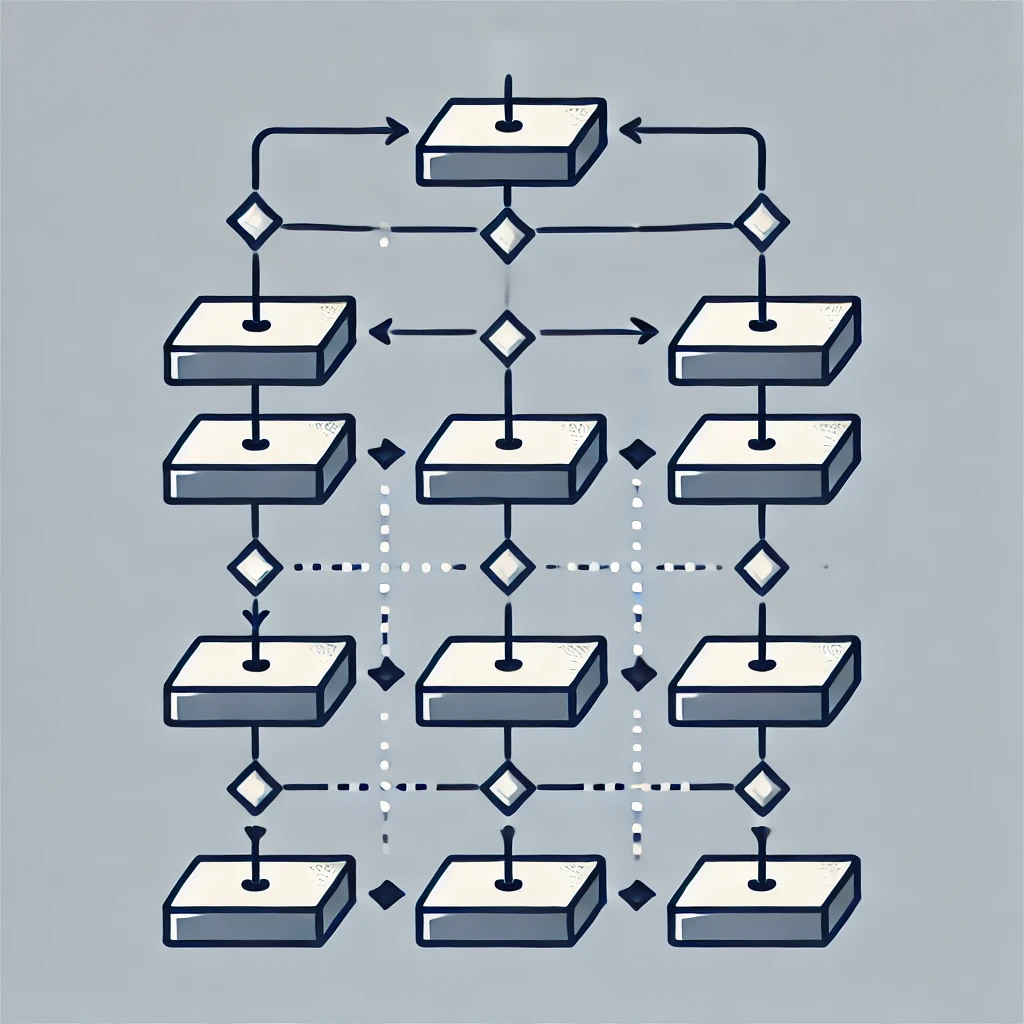Metric design is not about achieving perfection from the start. Just like building a house, you begin with the framework, then gradually refine and enhance it. The process of improving metrics follows a structured and iterative approach. The “Nano Management System Evolution” case study illustrates how metric design evolves over time rather than being a one-time task.
This chapter will explore how to initiate metric design, diagnose issues, integrate strategies, align execution, and continuously refine metrics.
Step 1: Establishing a Strategy Map – Laying the Foundation
The first step in metric design is setting up a Strategy Map—a framework that defines the company’s objectives and strategies to achieve them.
- How to start?
- Suppose a bank wants to increase customer trust and grow revenue by 15%.
- The Strategy Map breaks this down into financial (revenue growth), customer (trust improvement), process (efficiency enhancement), and learning (employee capability development) categories.
- The “Strategy Map Align” section in the case study illustrates this segmentation.
- A realistic start
- The initial focus should be direction, not perfection.
- A basic metric like “achieve 80% customer inquiry response rate” can serve as a starting point.
- Analogy
- Just as laying a strong foundation makes construction easier later, setting a Strategy Map simplifies future metric adjustments.
Step 2: Using PDT (Performance Diagnostic Tool) for Problem Diagnosis
Once the foundation is in place, the next step is diagnosing the current state to identify weaknesses. The Performance Diagnostic Tool (PDT) helps analyze whether metrics function correctly and where improvements are needed.
- How does it work?
- Suppose a bank campaign analysis reveals that “customer inquiry response rate is only 50%” or “ad click-through rates are too low”.
- The case study shows how PDT performs a “metric diagnosis” to analyze data flow and pinpoint problem areas.
- Progressive improvement
- The focus should be on fixing major issues first.
- A bank may set an intermediate goal: “Increase response rate to 60%” before aiming for 80%.
- Analogy
- Just as securing the foundation prevents structural weaknesses, PDT ensures that the metric system remains solid.
Step 3: Integrating Strategies Using Pooled Strategy Map
After identifying problem areas, the next step is to integrate strategies and improve metrics through a Pooled Strategy Map. This step consolidates multiple team objectives into a unified strategy.
- How does it work?
- Suppose the marketing team targets “achieving 5% ad click-through rate”, while the customer service team aims for “a 70% inquiry response rate”.
- The Pooled Strategy Map combines these into a broader goal: “achieve 85% customer satisfaction.”
- The “Pooled Strategy Map” section in the case study demonstrates this integration.
- Progressive improvement
- Initial targets can be separate for each team. Over time, they align into a larger organizational goal.
- For example, month 1 focuses on increasing ad clicks by 3%, while month 2 improves inquiry response rates by 10%.
- Analogy
- Just as walls and windows come together to form a complete house, different departmental efforts integrate into a cohesive strategy.
Step 4: Aligning Execution with Strategy
With an integrated strategy in place, execution must align with organizational goals. The Strategy Map Align section in the case study illustrates this process.
- How to execute?
- The marketing team implements “weekly ad copy testing to maintain a 5% click-through rate.”
- The customer service team ensures “response times remain under two hours.”
- These actions must align with the broader “85% customer satisfaction goal.”
- Progressive improvement
- Start with small targets like “increase click-through rate by 2%” and “reduce response time by one hour” before aiming for higher benchmarks.
- By month three, the goal becomes “achieve a 5% click-through rate and a two-hour response time.”
- Analogy
- Just as painting and furnishing finalize a house, execution refines and enhances the metric system.
Step 5: Final Refinement and Continuous Improvement
The final phase involves refining metrics and maintaining a cycle of continuous improvement. The “Metric System Evolution” section in the case study represents this phase.
- How is it completed?
- After six months, the bank’s campaign achieves 85% customer satisfaction and 15% revenue growth.
- New metrics, such as “customer feedback frequency” and “employee training sessions”, are introduced for further refinement.
- Progressive improvement
- The response rate started at 50%, then improved to 70%, and finally 85%.
- Regular reviews adjust unnecessary metrics and introduce new ones.
- Analogy
- Just as home improvement continues even after construction, metrics must be regularly reviewed and refined.
Real-World Example: The Evolution of a Bank Campaign
Let’s examine how a new savings account campaign evolves over time.
- Month 1
- The Strategy Map sets a goal: “acquire 1,000 new sign-ups.”
- PDT reveals insufficient ad reach, leading to an adjustment: “increase ad impressions to 10,000.”
- Month 3
- The Pooled Strategy Map integrates marketing (click-through rate 3%) and service (response rate 60%).
- Aligning execution ensures all teams work toward a common customer satisfaction target.
- Month 6
- Customer satisfaction reaches 80%, revenue grows 15%, and new metrics like “referral participation rate” are added to push satisfaction to 85%.
Throughout the campaign, the metric system evolved, refining goals and enhancing effectiveness.

Conclusion: The Never-Ending Journey of Metric Refinement
Metric design is not a one-time task. Instead, it is a progressive journey involving:
- Strategy Map – Laying the foundation
- PDT Diagnosis – Identifying weaknesses
- Pooled Strategy Map – Integrating strategies
- Execution Alignment – Implementing and refining actions
- Final Refinement – Continuous improvement
Just as a new house is continually upgraded and maintained, metrics must evolve through regular reviews and adjustments. Effective metric design ensures that business objectives are met with precision and adaptability.

